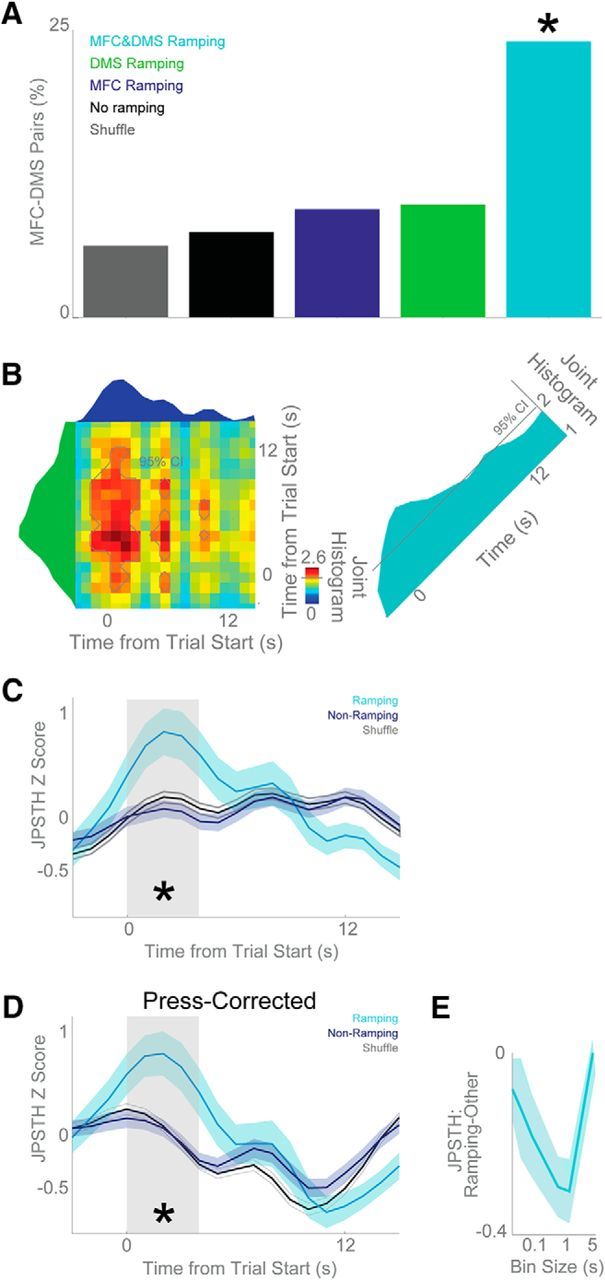Figure 9.

MFC and DMS neurons are correlated in time. A, Trial-by-trial correlation revealed that pairs of neurons where both neurons ramped (MFC&DMS Ramping, cyan) were much more likely to have a significant interaction than pairs of neurons where only one neuron ramped (DMS Ramping, green, and MFC Ramping, blue), where neither ramped (No Ramping, black), or compared with shuffled data (Shuffle, gray). B, To examine the time evolution of functional interactions between MFC and DMS neurons across the interval, we turned to JPSTHs, which look at trial-by-trial, bin-by-bin interactions corrected for firing rate. MFC and DMS neurons could have JPSTH interactions. For this pair, 95% confidence intervals based on shuffled data are plotted in light gray lines. C, JPSTH interactions during the interval for ramping neurons (cyan), nonramping neurons (blue), or shuffled data (gray). Data from 337 pairs of 40 MFC neurons and 42 DMS neurons in five animals with simultaneous recordings. Early in the interval (i.e., 0–4 s; shaded gray area), ramping neurons had stronger JPSTH interactions than nonramping neurons. D, Lever pressing is a key consideration that could affect JPSTH interactions; to correct for this, we subtracted lever presses on each trial from MFC and DMS firing rates, and calculated press-corrected JPSTHs on the residuals. For press-corrected JPSTHs, there were still stronger interactions for ramping neurons compared with nonramping neurons early in the interval. E, JPSTH interactions with different bin sizes showing that interactions were maximal at 1-s bins. All data are mean ± SEM; *p < 0.05.
